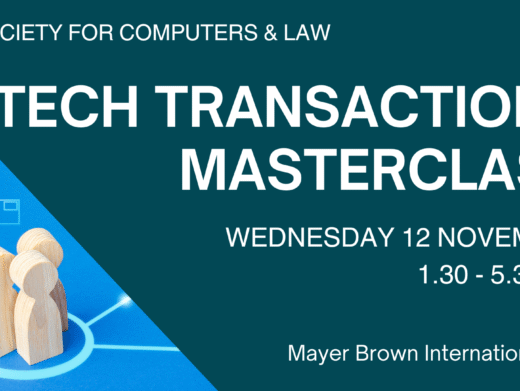Given the prevalence of payday loans and the ubiquity of the Internet in the consumer credit environment, it is probably a relief for lenders that the Hon Mr Justice Popplewell has found that clicking ‘I accept’ was a sufficient signature to meet the requirements of the Consumer Credit Act 1974.
In Bassano v Toft & Ors [2014] EWHC 377 (QB), a dispute over various loans secured on a valuable viola included a challenge to the online loan agreement that the debtor had arranged with a pawnbroker by completing an online form.
The judgment (at [39]-[45]) covers the issue so well that no further comment is needed:
- Section 61(1)(a) of the [Consumer Credit Act] provides that a regulated agreement is not properly executed unless a document in the prescribed form itself containing all the prescribed terms and conforming to regulations under section 60(1) is signed in the prescribed manner both by the debtor and by or on behalf of the creditor. The issue is whether the Borro Loan Agreement was “signed” by Mrs Bassano so as to fulfil this requirement.
- The agreement was reached and documented as follows. Mrs Bassano was present at Borro’s offices in the company of a representative of Borro. All loans by Borro are made online. The customer has to create an account online with personal information, including his or her name, and choose a password. When the loan terms are agreed, as a first stage the customer is presented on screen with a pre contract agreement setting out the proposed terms of the loan. The customer then acknowledges and accepts this information, following which the formal loan agreement is presented on the screen. It includes amongst other things the name of the borrower as part of the agreement. The customer indicates acceptance of that loan agreement by clicking on an acceptance button marked “I Accept” which is in a defined field on the screen. The concluded agreement is then generated in PDF form, which is available to the customer at any stage by logging on to the customer account and using the chosen password; and is available to be printed as a PDF document. The agreement is incapable of being changed after the customer has clicked on the “I accept” button. The agreement so generated also operates as the pawn receipt required by s114 of the Act, as its terms make clear.
- Mrs Bassano followed this procedure so as to bring into existence the Borro Loan Agreement. It recorded on the first page amongst other things her name and that of Borro Loan Ltd. In a box on the second page it stated:
“This is a credit agreement regulated by the Consumer Credit Act 1974
The client signed it by clicking “I Accept” in their account in the presence of a Borro representative and has agreed to be legally bound by its terms.
Date of signature 01/07/2011
Time of Signature: 14:05:41“
- Generally speaking a signature is the writing or otherwise affixing of a person’s name, or a mark to represent his name, with the intention of authenticating the document as being that of, or binding on, the person whose name is so written or affixed. The signature may be affixed by the name being typed in an electronic communication such as an email: see Golden Ocean Group Ltd v Salgaocar Mining Industries PVT Ltd [2012] 2 All ER (Comm) 978 at [32]. Section 7 of the Electronic Communications Act 2000 recognises the validity of such an electronic signature by providing that an electronic signature is admissible as evidence of authenticity.
- Section 61 of the Act requires the agreement to be signed “in the prescribed form”. The form prescribed at the time was that required by The Consumer Credit (Agreements) Regulations 2010 (SI 2010 No 1014). Regulation 4 governs signing. The only relevant prescription is in regulation 4(3)(a) which provides that the signature must be in a space indicated in the document for that purpose and dated. Regulation 4(5) recognises that a regulated agreement may be concluded electronically and that the document may contain “information about the process or means of providing, communicating or verifying the signature to be made by the debtor.” There is therefore nothing in the Consumer Credit Act 1974 to suggest that regulated agreements should not be capable of electronic signature; and I can see no reasons of policy why a signature should not be capable of being affixed and communicated electronically to an agreement regulated by the Act, just as it can for other documents which are required to be signed.
- Mrs Bassano electronically communicated to Borro her agreement to be bound by the terms of the Borro Loan Agreement by clicking on the “I Accept” button and thereby generating a document sent to Borro bearing her typed name which authenticated the document and communicated her agreement to be bound by its terms. That constituted signing it so as to fulfil the requirements of s. 61 of the Act.
- There arises a further question whether the location of such signature is in the form prescribed by Regulation 4(3)(a) which requires it to be in “the space in the document indicated for the purpose”. The words “I accept” appear in such a space, but Mrs Bassano’s name appears on the previous page. In my view the statutory regulation is fulfilled. A signature need not consist of a name, but may be of a letter by way of mark, even where the party executing the mark can write: Baker v Dening (1838) 8 Ad & E 93. The signature may consist of a description of the signatory if sufficiently unambiguous, such as “Your loving mother” (In re Cook [1960] 1 All ER 689) or “Servant to Mr Sperling” (In re Sperling (1863) 3 Sw & Tr 272). In the Borro Loan Agreement, the signature is made by the electronic communication of the words “I Accept” which are in the space designated for a signature. They constitute a good signature because the word “I” can be treated as being the mark which is unambiguously that of Mrs Bassano affixed for the purposes of authenticating and agreeing to be bound by the terms of the document. The signature is therefore in the designated space by reason of the words “I Accept” being in that space. The name on page one is of relevance because it is evidence that “I” is Mrs Bassano’s mark, if any were needed in addition to the evidence that it was she who clicked the button; but it is the words “I Accept” which constitute the signature, not the name on the previous page.




